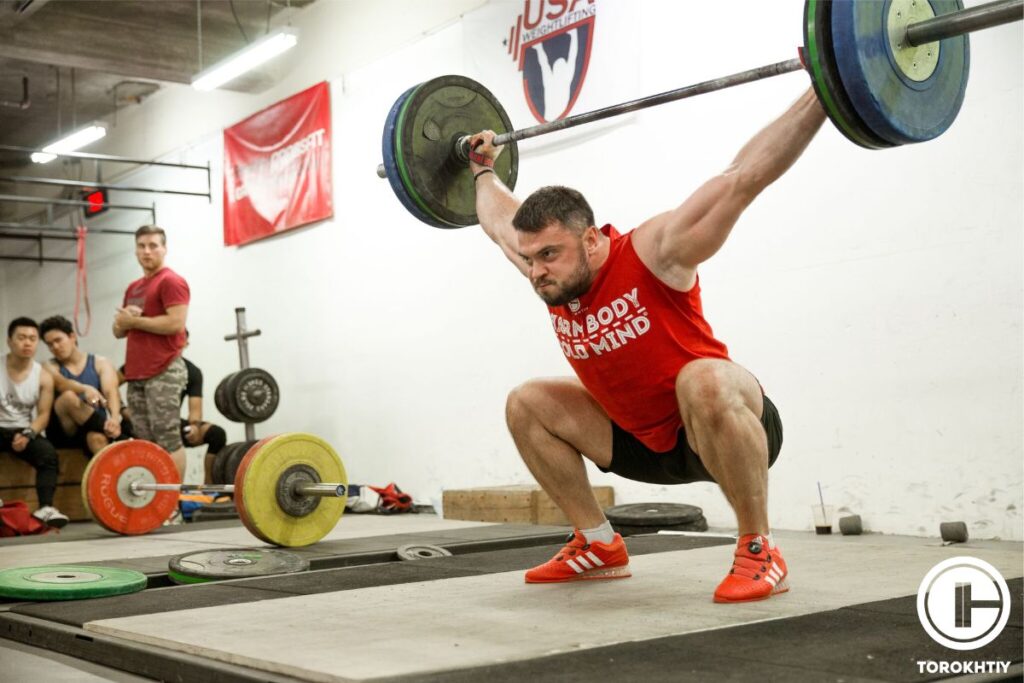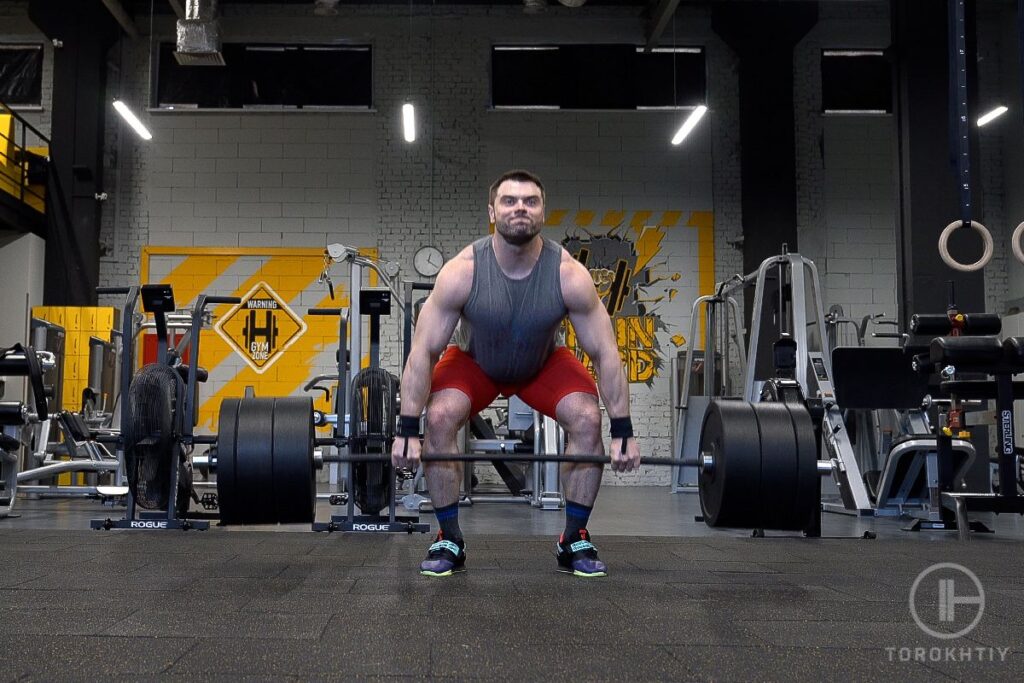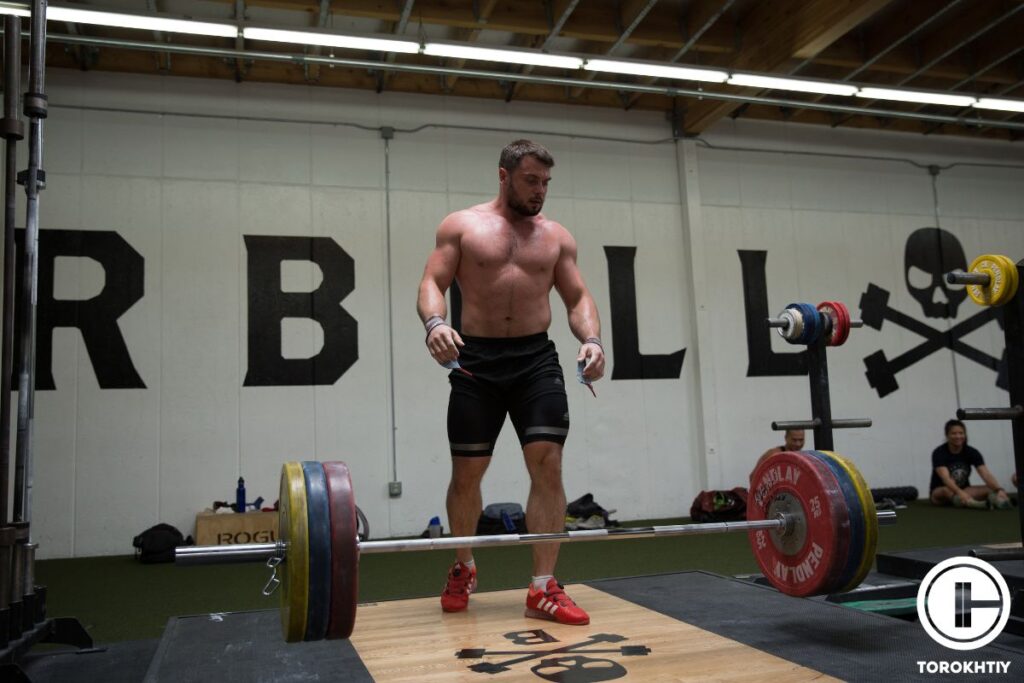What Is Training Volume?
Author:
Reviewed by:
(21 years of Oly Lifting experience)
Unlock your full potential by engaging with our experts and community! Have questions about your fitness journey or looking for expert advice on weightlifting techniques? Don’t hesitate — leave a comment below and Sergii Putsov will provide a personalized answer and insights to help you reach your goals.
Torokhtiy is reader-supported. Some links are affiliate links, and we may earn a commission at no extra cost to you. See our disclosure page for details.
Welcome to our guide on understanding “what is training volume”! You know, every training program, whether it’s for Olympic weightlifting or any other sport, is like a unique recipe. It combines various exercises and loads, sprinkled with a pinch of personalisation, to create a mix tailored to each athlete.
What is training volume? Training volume is the total amount of work you do in a workout or in a certain period of time. It’s typically calculated by multiplying the number of sets you do by the number of reps and the weight used.
Believe it or not, there’s a whole world of sports science devoted to studying these recipes. They explore patterns in training development, looking at the sprinkles of differences that come from various sports, the gender of the athletes, and their experience levels – be they budding young athletes, seasoned pros, or veterans who’ve seen it all.
When a coach or athlete whips up their training program, they’re taking into account the goal of the workout, the time they’ve got to prepare, and the unique quirks and characteristics of the individual athlete or team. So let’s dive into the world of training volume, your essential ingredient to understand and optimize your sporting success!

What Is Training Volume?
Training volume definition in Olympic weightlifting, and strength training in general, typically refers to the total amount of work performed during a given training exercise, workout volume or over a certain period of time (week, month, year, Olympic 4 year cycle). This is usually calculated as the product of the number of sets, the number of repetitions (or reps) per set, and the weight lifted in each rep.
In Olympic weightlifting, which primarily consists of the snatch and the clean and jerk, lifters often use training programs that vary the volume and intensity (i.e., the weight lifted relative to their one-repetition maximum, or 1RM) in order to optimize strength, power, and technique.
Tracking volume is important because it can help athletes manage and plan their training load to prevent overtraining and injury, while also ensuring they’re doing enough work to stimulate strength and skill gains.
How to Measure the Volume of Training?
Step into the weightlifting arena with confidence as we break down the simple steps on how to measure your training volume. It’s as easy as counting 1-2-3!
You primarily measure your volume in weightlifting through three main ingredients: sets, repetitions, and the weight you’re lifting.
1. Calculation Approaches
Usually weightlifters calculate these parameters in every training exercises, session, week, month, etc in total and in specific exercises groups: snatch, C&J exercises, snatch & clean pulls, squats, accessory exercises.
The recommended amount of load distribution in these groups of exercises is presented in the table:
| Exercise Groups | % |
| Snatch exercises | 22 |
| C&J exercises | 25 |
| Snatch pulls | 10 |
| Clean pulls | 10 |
| Squats | 22 |
| Accessory exercises | 11 |
2. Repetitions Volume
Or ‘total reps’ for short. These are the number of repetitions you perform a certain movement. For example, lifting the barbell once in one set would count as one rep.

3. Weight Volume
This is the amount of weight you’re lifting in each rep. It’s usually measured in kilograms (kg), tons or pounds (lb), depending on what part of the world you’re in.
So how do you measure training volume? You simply multiply these ingredients together!
If you do 6 sets of 4 reps with a weight of 120 kg, your total training volume for that workout would be:
6 (sets) x 4 (reps) x 120 (kg) = 2880 kg.
4. Calculating Exercise Contribution to Total Weight Training Volume
The proportion of the overall volume load accounted for by each individual exercise can be calculated by employing a simple mathematical formula. This entails dividing the number of repetitions performed in a single exercise by the overall total number of repetitions completed during the workout session. The result is then multiplied by 100% to determine the corresponding percentage.
For instance, if an exercise involved performing 120 repetitions and the total number of repetitions executed throughout the week amounted to 390, the share of that specific exercise would be approximately 30.8%.
120 (exercise reps) / 390 (total volume) * 100% = 30.8%.
Follow us!

Free!
Get a 2-week Weightlifting Program as a bonus for the subscription to kickstart your training plan!

Free!
Recommendations For Training Volume In Weightlifting
Training volume in Olympic weightlifting can vary greatly depending on a multitude of factors including age, experience level, and the frequency of training. The recommended training volumes provided here are guidelines, but individual athletes’ requirements may differ. Always consult with a certified coach or trainer to establish the optimal training volume for your personal needs.
Let’s take a look at some general guidelines:
1. Training Frequency
This table presents a valuable breakdown of suggested training frequencies for Olympic weightlifting based on an athlete’s experience level. Starting with beginners who have less than 6 months of experience, the recommendation is to train thrice a week.
Guidelines for Olympic weightlifting training frequency based on training experience:
| Training Status | Training Experience | Sessions per Week |
| Beginner | <6 months | 3 |
| Intermediate | <2 years | 4-5 |
| National Level | over 4 years | 5-8 |
| International Level | over 6 years | 8-15 |
For intermediate lifters with less than 2 years of experience, the suggested frequency increases to 4-5 sessions per week. The guidelines then move to advanced categories: national level athletes with over 4 years of experience are advised to train 5-8 times a week. For those at the international level, who typically have over 6 years of experience, an intensive regimen of 8-15 sessions per week is suggested.
So if your question is what is high volume training, everything over 5 sessions per week is definitely high volume training. These guidelines serve as a useful roadmap for athletes and coaches in planning training schedules to optimize performance and progression.

2. Number and Sequence of Exercises
In the first years, training is subject to the principles of comprehensive development of the athletes’ body. A base is laid for future achievements. Pre-planned specialization is introduced a year or two after the start of systematic training with weights.
In weightlifting, it is most appropriate to use 4-6 strength exercises in one workout. Practice has developed the following sequence of exercises: first, speed & power exercises are performed, then strength exercises, and at the end of the training – for the development of strength endurance. Recently, training of a separate Snatch or C&J exercises has been singled out. During Snatch training, the following is performed: Snatch variations, special strength exercises for snatch, the rest – strength exercises for general development. A similar structure is preserved in C&J training.
3. Monthly Volume Ranges in Olympic Weightlifting
Take a look at this table with volume ranges for different exercises groups depending on athlete’s training experience.
| Training Status | Training Experience | Snatch Exercises | C&J Exercises | Snatch Pulls | Clean Pulls | Squats |
| Beginner | <6 months | 250±50 180±30 | 325±42 220±20 | 116±40 60±25 | 82±50 72±35 | 337±85 243±60 |
| Intermediate | <2 years | 330±70 252±52 | 396±45 312±35 | 178±80 75±35 | 210±85 180±30 | 380±106 276±75 |
| National & International Level | over 4 years | 420±120 315±90 | 556±95 420±90 | 114±60 68±30 | 171±95 135±65 | 420±130 300±100 |
Volume Ranges in Olympic Weightlifting, by V. Oleshko, 2013. (recommended ranges are from 70% of 1 RM).

Elite weightlifters often adjust the number of lifts they perform in a snatch based on their performance in snatch accessory exercises. Here’s how it works:
If a lifter’s results are similar between the snatch and snatch accessory exercises, it suggests they have good speed and strength. However, they may still struggle to reach their full potential due to some issues with their technique or mindset.
On the other hand, if there’s a big difference in their performance, it usually means that the lifter’s snatch technique is solid, but they need to boost their speed and strength. They can do this by working harder on their snatch accessory exercises. So, depending on their personal strengths and weaknesses, weightlifters tweak their training to improve their overall performance. It’s all about finding the right balance!
The Clean & Jerk is a challenging exercise that demands both speed and strength from weightlifters. That’s why athletes often break it down into two separate parts: they might focus on the ‘Clean’ in one session and the ‘Jerk’ in another.
However, closer to competitions, most athletes perform the full Clean & Jerk. It’s also important for beginners and amateur weightlifters to practice the full move regularly. This is to help them get the hang of it. A good rule of thumb is to perform the Clean & Jerk every other training session or few times per week.
Typically, the Clean & Jerk is done as one of the first couple of exercises in a training session.
In the preparatory period, the number of reps in pulls is: with a weight of 80-99% – 2-6, and with a weight of 100-109% – 2-5. In the competitive period, it is 2-4. Weightlifters of light weight categories most often use 2-3 repetitions, and heavy ones – 4-6 repetitions. Pulls are performed in almost every training session, alternating snatch and clean pull. Most often, pulls are performed in the middle or at the end of a training session.
Elite weightlifters have stronger leg muscles than beginners. That’s why beginners perform a high volume of squats. It is not recommended for beginners to perform squats with maximum weight. The number of repetitions per attempt in squats is with a weight of 65-85% – 2-6 reps, 95-105% – 1-2 reps. Weightlifters of light weight categories, who are not faced with the task of increasing muscle mass, most often perform squats with 1-3 repetitions.

How To Increase The Volume Of Training?
Increasing the volume of training in Olympic weightlifting should be approached with careful consideration to prevent injury and overtraining. Here are tips to help you gradually and safely increase your training volume:
1. Gradual Increase
Don’t rush to increase the volume drastically. Gradually add more sets, reps, or weight to your training over time. A common rule is to increase volume by no more than 10% per week. Also keep in mind to move the amount of volume and reps from lighter intensity zones to heavier gradually as well.
2. Focus on Technique
Increasing training volume shouldn’t compromise your form. Maintaining good technique becomes even more critical as volume increases to prevent injuries.
3. Periodization
Implement a periodized training program. This involves structured changes in training volume and intensity to optimize gains and recovery. Periodized training allows athletes to strategically vary their workouts to prevent overuse injuries, overtraining, and psychological burnout. It also allows for peak performance to coincide with important competitions or events. Always remember, though, that successful periodization requires careful planning and a deep understanding of the athlete’s individual goals, responses to training, and rate of progress.
It is common to use volume variation in weekly microcycles inside of a month mesocycle. Most coaches use this distribution model: 35, 28, 22, 15 %. So for example in your month volume is 1200 reps, distribution will look like that:
| Week 1 | Week 2 | Week 3 | Week 4 | |
| % | 35 | 28 | 22 | 15 |
| Reps | 420 | 336 | 264 | 180 |
Depending on the training period and goals, week order can differ.
So this is the answer to the question: what is volume in weight training?
FAQ
What Is German Volume Training?
German Volume Training (GVT) is a high-intensity workout method, primarily aimed at muscle growth. It involves performing 10 sets of 10 repetitions for a particular exercise, leading to a total of 100 reps per exercise. The goal is to use the same weight for each set, typically around 60% of your one-rep max, focusing on maintaining form and controlling the movement. It’s a challenging technique known for its effectiveness in building muscle mass.
What Is Training Volume And Frequency?
Training volume refers to the total amount of work done in a workout, often calculated as the product of sets, repetitions, and the weight used. Frequency, on the other hand, refers to how often you train, usually expressed as the number of workout sessions per week. Both are key components of a training program and can be adjusted to meet specific fitness goals, whether they’re related to strength, endurance, or muscle size.
Conclusion
Now that you’ve delved into the world of training volume, use this knowledge to spice up the Olympic weightlifting routine. Remember, each athlete’s recipe for success is unique, and careful experimentation is key. Feel free to share your experiences or ask questions in the comments below. Your journey to becoming a stronger, more skilled athlete starts here!
Why Trust Us?
With over 20 years in Olympic weightlifting, strength training, nutrition coaching, and general fitness our team does its best to provide the audience with ultimate support and meet the needs and requirements of advanced athletes and professional lifters, as well as people who strive to open new opportunities and develop their physical capabilities with us.
By trusting the recommendations of our certified experts in coaching, nutrition, and sports training programming, as well as scientific consultants, and physiotherapists, we provide you with thorough, well-considered, and scientifically proven content. All the information given in the articles concerning workout programming, separate exercises, and athletic performance, in general, is based on verified data.
The product testing process is described in more detail here.
Author: Sergii Putsov
Head of Sport Science, PhD
Best Results: Snatch – 165 kg,
C&J – 200 kg
Sergii Putsov, Ph.D., is a former professional weightlifter and National team member, achieving multiple medals in the 94 kg weight category at national competitions. With a Master’s degree in “Olympic & Professional Sport Training” and a Sport Science Ph.D. from the International Olympic Academy, Greece, Sergii now leads as the Head of Sport Science. He specializes in designing training programs, writing insightful blog articles, providing live commentary at international weightlifting events, and conducting educational seminars worldwide alongside Olympic weightlifting expert Oleksiy Torokhtiy.
Reviewed by: Oleksiy Torokhtiy
Olympic Weightlifting Champion, PhD in Sport Science
Best Results: Snatch – 200 kg,
C&J – 240 kg
Oleksiy Torokhtiy is a professional athlete boasting 20 years of experience in Olympic weightlifting. With multiple European and World titles under his belt, he has showcased his prowess in two Olympic Games (Beijing 2008 and London 2012). Upon concluding his illustrious career, Oleksiy dedicated himself to coaching. By 2022, he had conducted over 200 weightlifting seminars worldwide. He is the visionary behind an international sportswear and accessories brand known for its motto, “Warm Body Cold Mind.” Additionally, he is an esteemed author and the creator of a series of training programs and eBooks.





Still have questions after reading our article? Unlock your full potential by engaging with our experts and community! Don’t hesitate — leave a comment below and Sergii Putsov will provide a personalized answer and insights to help you reach your goals.